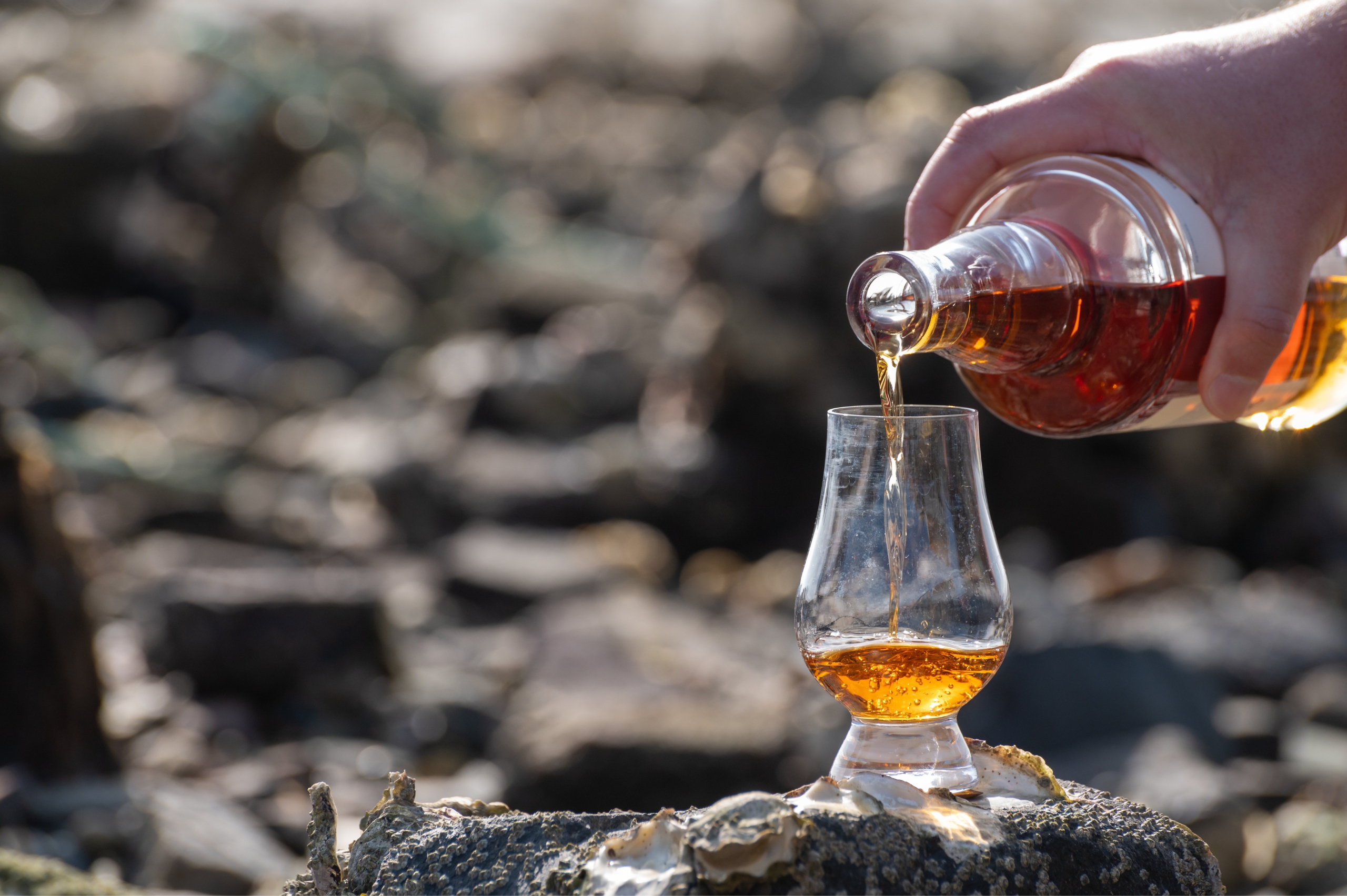What is Scotch single malt?
This seemingly simple question is often answered incorrectly. The definition of a single malt is that it is made at one distillery (single) and of 100% malted barley (malt). If there are any variations on this, then it is not a single malt.
What makes something a Scotch whisky? To label a product as a Scotch whisky it must legally tick several boxes – it must be distilled, matured, and bottled in Scotland, and must be matured in oak casks for a minimum of three years. It must also legally be 40% ABV or above. The alcohol strength cannot drop below that.
Types of Scotch single malt
There are several styles of Scotch single malt. Traditionally, these were dictated by the region of Scotland where a distillery was located – Lowland whiskies were light and delicate; Speyside soft and fruity; Highlands more robust and malty; Islay peaty and smoky.
This is less the case nowadays, especially within the craft and artisan distilling scene, as distillers are producing all styles across all regions.
The tastes of Scotch single malt range greatly from fresh and vibrant to rich and peaty. Age and maturation cask type play considerable roles. Older whiskies are more mellow, deep, and complex than those of a more youthful age.
Ex-bourbon casks tend to give notes of honey, vanilla, butterscotch, and delicate spice while ex-sherry casks give notes of dried fruit, nuts, caramel, and baking spice. Whiskies with a combination of both cask types will have a complex mix of both sets of characteristics.
A brief history of Scotch single malt
Throughout most of the history of Scotch whisky the single malt distilleries were built and produced whisky to be used in blends. For much of the 19th century and first half of the 20th, single malts were often seen as too rough, too expressive, and more challenging to drink than blends.
Single malts were regarded as the poor relation and rarely bottled as a result. This saw blends historically steal a march on single malts and corner the market for Scotch whisky. This was fuelled by the expansion of the British Empire during the Victorian era, and it is only recently that the single malt market has started taking back market share.
Bottlings of single malt had been available throughout but were sporadic and not that popular. That changed in the mid-1960s with the introduction of Glenfiddich Pure Malt. This is widely regarded as being the world’s first commercially available Scotch single malt. At the time, many thought that owners William Grant & Sons were mad for bottling and promoting it. The rest is history.
The company decided to set up a store at Shannon airport in the west of Ireland. In the mid-1960s transatlantic flights had to refuel at Shannon when flying in either direction from London to New York. Passengers had to disembark to plane, so William Grant’s saw an opportunity to sell significant amounts of Glenfiddich to a captive audience. It worked. Therefore, not only did William Grant & Sons kickstart the single malt category but also the travel retail sector.
In the subsequent decade other distilleries joined and sales of single malts grew rapidly around the world. However, a catastrophic slump in the 1980s almost set progress back to square one. Around this time, several distilleries closed but brands in Scotland worked together to give single malt a premium edge – this is when the age statements (10, 12, 15, 18 years old, etc.) that we know today came into being. This strategy aided growth but single malt remained a cult product.
Fast forward 20 years and single malt sales really started to pick up at the beginning of the Millenium. The last decade has seen a level of popularity for Scotch single malt like never before. More brands and distilleries have joined the party to offer more products for consumers.
The rise of whisky blogs, websites, and brand education has contributed significantly to this, alongside traditional brand marketing and promotion. The result – there are now over 140 distilleries producing single malt in Scotland and market share continues to rise.
Top 5 Scotch single malts
As Scotch single malt sales continue to grow and increase beyond that 10% mark, there are several brands that are leading the way. The Top 5 in terms of sales have traditionally been strong and are some of the most well-known distilleries in Scotland. It is also no coincidence that the five are some of the largest – they have a combined annual production capacity of over 60 million litres to help meet current and future consumer needs.
Glenfiddich and Glenlivet
These are the two largest single malt distilleries and biggest sellers. Both have a production capacity of 21 million litres per year and have been exchanging places between first and second place for a decade now. The two stalwarts are both located in the Speyside region and known for their soft and fruity style of single malt.
Macallan
Macallan is consistently in third place and located in Speyside. The rich, and often sherried styled whisky has seen its market share grow considerably over the last decade. A strategic move into the premium sector is largely to thank for this success. Being James Bond’s single malt of choice during the Daniel Craig era didn’t hurt either.
Glenmorangie
Its light, elegant single malts are fourth on the list. The distillery is in the northern Highlands and boasts the tallest stills of any single malt distillery in Scotland – standing at over five metres, which is the same height as a male adult giraffe.
Laphroaig
This sits comfortably in fifth place for world sales and leads the charge for the peated single malt category. The iconic Islay distillery is bold, medicinal, and smoky. It outsells its closest rival by several cases to one. It shows that you can be expressive and different while being popular.
For further information on single malt Scotch whisky or the best whisky cask investments to make, please contact us below.




